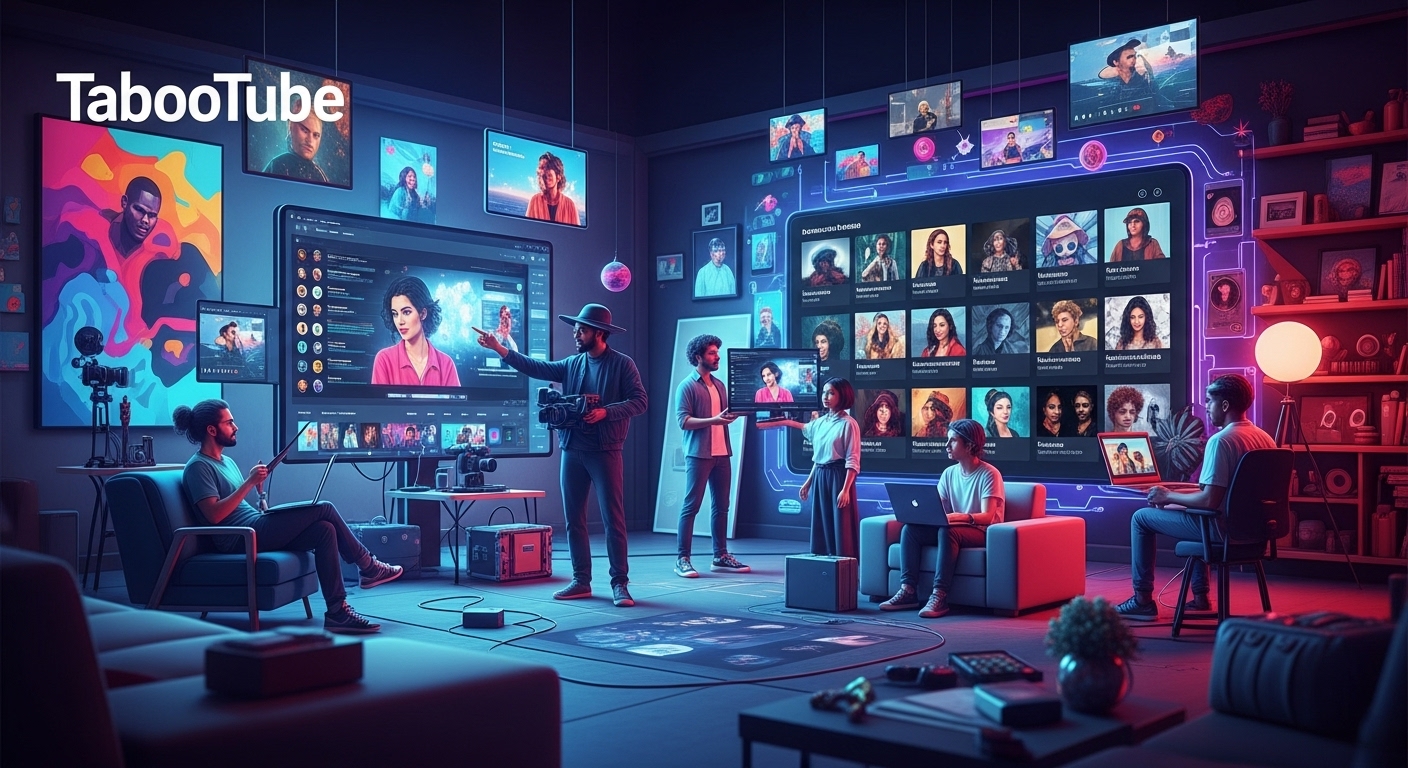I’ve got to be honest: when someone first mentioned “ZVideo” to me, I thought it was a typo. Like, maybe they meant Vimeo? Or Zoom video? Or some new Gen Z slang that I’d missed because I’m not 17 anymore. But nope. ZVideo is real, and it’s one of those words floating around the digital world that means slightly different things depending on who’s saying it, which makes the story messy. And, honestly, kind of interesting.
So, let’s dive in together. We’ll explore what ZVideo is, how it came to be used in several different contexts, why people care, and where it might be headed. Think of this less as a polished Wikipedia entry and more like a long conversation at a café where we wander into tangents, pull back, ask silly questions, and eventually land somewhere sound.
The Name Itself: ZVideo, ZViDEO, Zvideo… Wait, Which?
Names in tech often blur together. Remember when “Live” could mean Microsoft Live, Facebook Live, or just live video? Same vibe here.
- ZViDEO (with all caps in the middle) comes from ZMicro. Their product is video management software for serious use cases—think broadcasters, military feeds, and security archives. It’s heavy-duty.
- ZVideoAI is a consumer-facing product that leans into the AI wave—tools for creators, auto captions, translations, and TikTok-ready edits.
- Zvideo (lowercase) is talked about as if it’s a general video hosting and sharing platform. Upload, stream, analyze, monetize.
So the name travels. Depending on which corner of the internet you land in, ZVideo might be a professional backend tool, an AI-powered app, or an alternative to YouTube. Confusing? Sure. But also kind of fascinating that one label got attached to so many dreams about the future of video.
A Quick Anecdote: Why This Matters To Me
Back in 2015, I worked for a tiny online magazine. We wanted to cover breaking news with live video, so we hacked together this janky setup: one camera, one laptop, and a streaming service nobody had ever heard of. It failed miserably: buffering, audio out of sync, metadata gone. We gave up and just embedded YouTube clips.
That memory sticks with me because video isn’t simple. People think: point camera, press record, upload. But behind that is a world of encoding, transcoding, tagging, storage, rights management, playback quality, and user experience—a nightmare, honestly.
So when I see the word ZVideo—this attempt to make video less painful—I pay attention, even if it’s not perfect yet.
So, What Exactly Is ZVideo?
Let’s break down ZVideo’s three main “faces.” You’ll see why people sometimes talk past each other about it.
1. ZViDEO by ZMicro: The Pro Gear
Imagine you’re a newsroom producer or in charge of archiving surveillance footage. You need to grab clips in real time, tag them, save them, share them, and keep them searchable for years. That’s the ZMicro angle.
Their ZViDEO software does things like:
- Real-time clipping (cutting highlights while a stream is still going).
- Frame-accurate editing.
- Metadata insertion, down to the frame level.
- Archiving across storage systems.
It’s not glamorous, but the plumbing makes professional video workflows possible. Most viewers will never know it exists, which is probably the point.
2. ZVideoAI: The Creator’s Shortcut
On the other hand, there’s ZVideoAI. This one is aimed at individuals and small teams that want to produce content quickly.
Think: upload audio, pick a template, and get a flashy vertical video with captions in minutes. It’s like Canva but for TikTok or Reels. The pitch is that you don’t need to know editing, codecs, lighting, or anything else. Just drop your stuff in, and AI will make it shine.
Some features:
- Auto captions and translations.
- Stock visuals and templates.
- Converting podcasts into video.
- Monetization tools for creators (though in the early days).
Is it groundbreaking? Maybe not. But it’s lowering barriers for everyday people to join the video rush.
3. Zvideo the Platform: Hosting and Sharing
Then there’s the more general “platform” version. Articles describe Zvideo as a next-gen alternative to YouTube or Vimeo—the promise is a clean interface, high-def streaming, privacy controls, analytics, and maybe monetization.
Will it actually rival YouTube? Probably not right away. YouTube is basically the internet’s second-largest search engine. However, smaller, niche platforms can thrive when they offer creators more control or a less crowded environment.
Why the Hype? Why Bother With Another Video Thing?
It’s fair to ask: why not just use YouTube, Instagram, or TikTok? Those already dominate video.
Here’s the thing. Big platforms have downsides:
- Algorithms that bury small creators.
- Ads everywhere.
- Loss of control (suddenly your video gets demonetized or removed).
- Data ownership issues.
A tool like ZVideo, in any of its forms, promises something else. For pros, it’s control over infrastructure. For creators, it’s speed and AI help. For brands, it’s hosting without ads. And maybe that’s enough to carve out a niche.
Tangent: Remember Vine?
Quick detour. Remember Vine? Six-second looping videos that gave us the “road work ahead? Uh yeah, I sure hope it does” meme. It died, but its spirit lives on in TikTok. Why bring this up? Every time a new video platform shows up, people laugh, and sometimes, it changes culture.
I’m not saying ZVideo is the next Vine, but we shouldn’t dismiss “yet another video thing” too quickly. Sometimes, the underdogs redefine the rules.
Strengths ZVideo Brings
- All-in-one vibe: Instead of juggling tools, you get editing, metadata, and hosting in one suite.
- Real-time speed: Clipping during live events saves precious minutes.
- AI help: Non-technical creators can still make polished videos.
- Control & privacy: Smaller platforms sometimes let you decide who sees what.
The Challenges (Let’s Be Honest)
- Competition is brutal: YouTube, TikTok, Instagram—giants that eat smaller fish for breakfast.
- Execution risk: Promises are one thing, delivering seamless tools is another.
- Quality ceiling: AI-generated videos often look… samey. Templates get stale fast.
- Money burn: Video storage and streaming chew through cash. Without scale, it’s tough.
FAQs People Keep Asking
Is ZVideo free?
Depends on the version. ZVideoAI has a free plan with watermarks. Enterprise ZViDEO? Definitely not free.
Can I monetize videos there?
The hosting platform version claims yes, but the details are fuzzy. Don’t expect YouTube-level ad revenue right away.
Is it safe?
Professional ZViDEO systems are secure. The security of consumer tools depends on how they handle user data and copyright.
Why the “Z”?
Honestly, probably branding. Z is trendy, signals Gen Z, futuristic vibes. Or maybe someone just liked the letter.
Future Directions
Where does ZVideo go from here? My guess:
- ZViDEO will keep serving niche pro users.
- ZVideoAI might ride the AI wave, making fast, short videos for people who don’t want to touch Premiere Pro.
- Zvide, the platform, will try to build a community but will need a killer feature to stand out.
It could be powerful if they connected all three into one ecosystem. Imagine Pro Tools creator AI and a hosting platform under one umbrella. That’s ambitious, but sometimes ambition is what drives innovation.
Final Thoughts: Why You Should Care
Video isn’t just entertainment anymore. It’s how we learn, protest, sell, and connect. Even if it looks small at first, every tool that reshapes video could ripple out into culture.
ZVideo, in all its confusing forms, represents that ongoing push to make video easier, faster, more controlled, and more accessible. Whether it succeeds or fades, it tells us what creators and companies want from the medium.
And honestly, that’s the interesting part. ZVideo isn’t just “another app.” It’s a signpost on dealing with moving images in the 2020s.
Ever noticed how every decade reinvents how we consume video? VHS. DVDs. YouTube. TikTok. Maybe ZVideo sneaks in as part of that story. Or perhaps it vanishes. We’ll see. And that’s the point.




